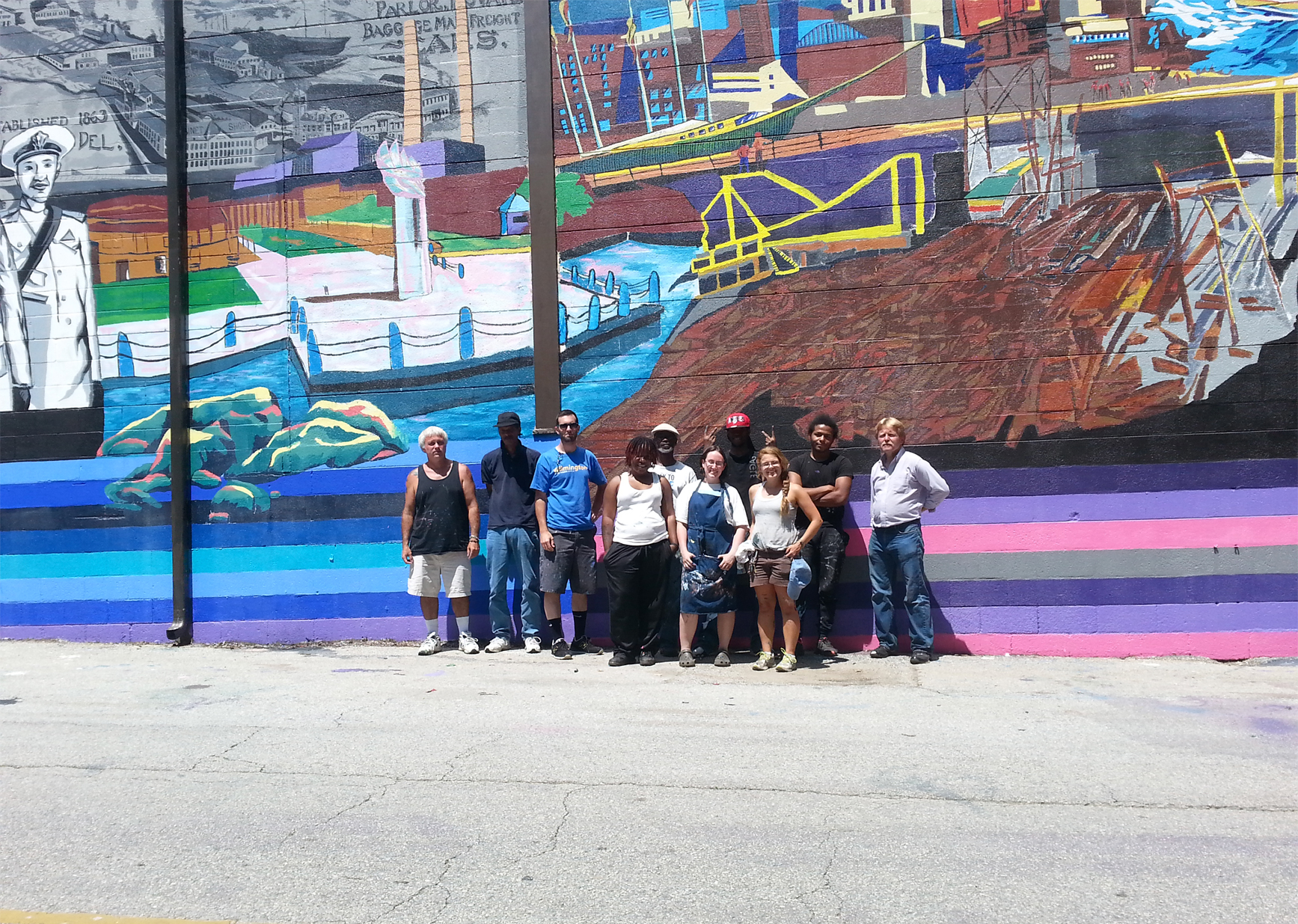Contrary to popular belief, not all galleries are indoors.
Some galleries don’t have four walls, security guards, and a sign reading “please do not touch the art.” Nor do they have their art shielded behind vitrines and frames within a climate-controlled environment. In fact, some galleries are right outside your door. Whether you notice or not, public art is all around us: abstract sculpture in front of your office building, a mural on the side of the community center two blocks from your apartment complex; works of art you pass by daily but may not stop to appreciate.
Wilmington’s outdoor gallery boasts artworks ranging from the 19th century to the present. From memorials and sculptures to mosaics and murals, our environments are beautified by artists. Artists are essential to our communities. They use the city as a canvas to inspire their neighbors. Their creations enliven the cityscape, acting as tangible expressions of their city’s cultural heritage, and becoming beacons for civic engagement, public pride, and even attracting business investments.
However, unlike indoor galleries and museums, our city’s artistic outdoor installations are not under constant supervision. As a result, the efforts of our artists are at risk. With chipping and fading paint, rust, and corroding metal, much of Wilmington’s public art has fallen into disrepair, exposed to years of neglect and weather damage. If left unattended, these pieces will only deteriorate further until unrecognizable by their community.
To prevent the ruin of these artworks, the Delaware Art Museum is debuting a transformative new initiative, the Public Art Stewards Training Program. This workforce readiness program will train Public Art Stewards to clean, conserve, and document public art. A six-month pilot, funded by the American Rescue Plan Act, begins next year with a cohort of six to eight Wilmington residents who will steward 30 works of public art in downtown Wilmington and surrounding neighborhoods.
As a cultural fixture in the community, the Delaware Art Museum is highly knowledgeable of public art needs. With its influence and connections, our institution intends to share our resources to remedy these issues, giving Wilmington and its residents the support to revitalize our city’s outdoor gallery. Focusing on stewardship and sustainability, the Public Art Stewards Training Program will both expand the field of conservation and develop participants’ transferable skills, supporting their workforce readiness.
Professional conservator Margalit Schindler will teach the Public Art Stewards how to assess, conserve, maintain, and document their outdoor gallery. With onsite hands-on experience, Margalit will train participants in the skills and tools necessary to care for and document 30 key works of art around Wilmington. In tandem with Margalit’s teachings, local partners will add training in essential readiness skills, including digital literacy and financial coaching. With these additional trainings, participants will be equipped to both obtain and sustain employment.
Applications for the Public Art Stewards Training Program will open in early December to Wilmington residents. Partnering with the Creative Vision Factory, with support from the State of Delaware and City of Wilmington, we will prioritize Black, Indigenous, and People of color, individuals on the behavioral health spectrum, and those navigating economic precarity and displacement. With the progression of this project, we intend to advocate for the program to take root outside of Wilmington, expanding to all three Delawarean counties in the future. We believe that art is essential, here in our city and throughout our state.

Benét Burton
Registrar Assistant/Curatorial Project Manager
Top: Creative Vision Factory Members in front of the Kalmar Nyckel Mural courtesy of Michael Kalmbach.

